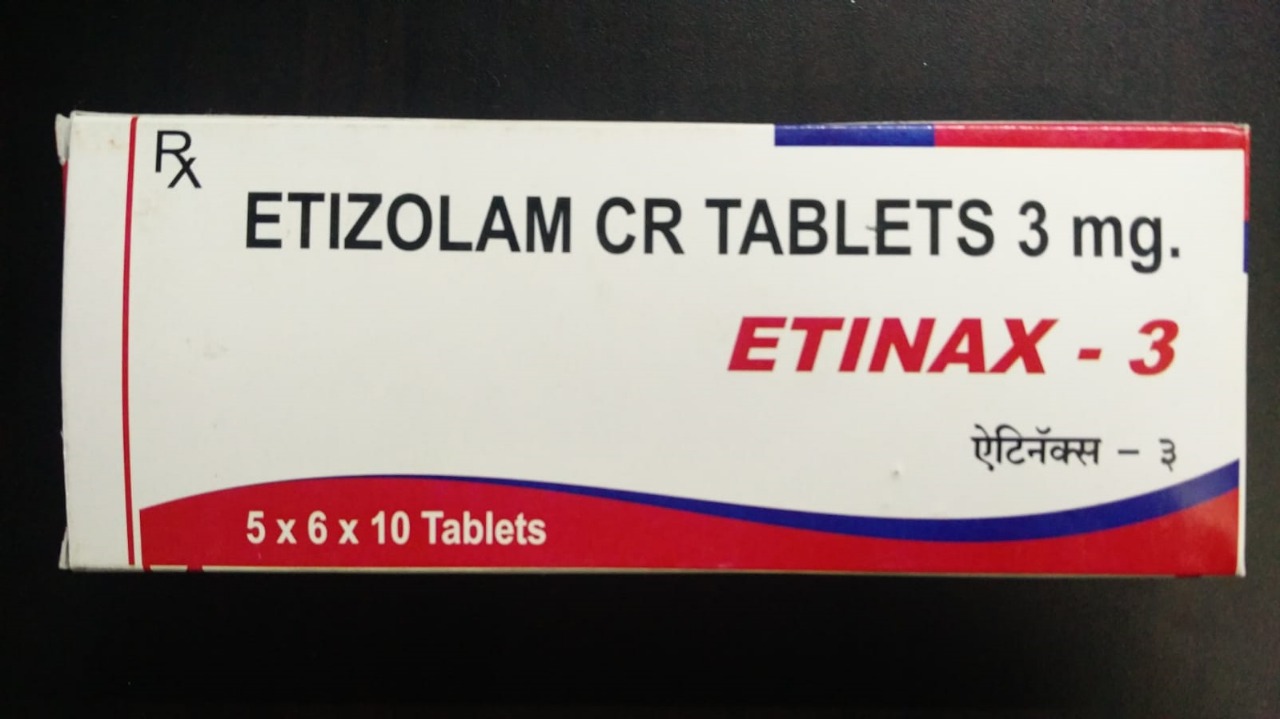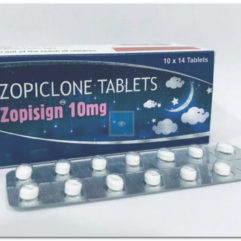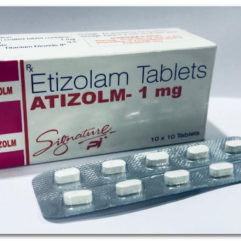Descrizione
Etizolam is a thienodiazepine which is chemically related to benzodiazepine (BDZ) drug class; it differs from BDZs in having a benzene ring replaced with a thiophene ring. It is an agonist at GABA-A receptors and possesses amnesic, anxiolytic, anticonvulsant, hypnotic, sedative and skeletal muscle relaxant properties. Initially introduced in 1983 in Japan as treatment for neurological conditions such as anxiety and sleep disorders, etizolam is marketed in Japan, Italy and India.
Indication
Indicated for the treatment of generalized anxiety disorder with depression, panic disorder and insomnia.
Pharmacodynamics
Etizolam is a CNS depressant with anxiolytic, anticonvulsant, sedative-hypnotic and muscle relaxant effects. It acts on the benzodiazepine site of the GABA-A receptor as an agonist to increase inhibitory GABAergic transmission throughout the central nervous system. Studies indicate that etizolam mediates its pharmacological actions with 6 to 10 times more potency than that of diazepam. Clinical human studies performed in Italy showed clinical effectiveness of etizolam in relieving symptoms in patients with generalized anxiety disorders with depressive symptoms. Etizolam also mediates imipramine-like neuropharmacological and behavioral effects, as well as minor effects on cognitive functioning. It is shown to substitute the actions of a short-acting barbiturate, pentobarbitol, in a drug discrimination study . Etizolam is an antagonist at platelet-activating-factor (PAF) receptor and attenuates the recurrence of chronic subdural hematoma after neurosurgery in clinical studies . It is shown to inhibit PAF-induced bronchoconstriction and hypotension.
Mechanism of action
Etizolam is selectively a full agonist at GABA-A receptors to increase GABAergic transmission and enhance GABA-induced Cl- currents. It is reported to bind to the benzodiazepine binding site which is located across the interface between the alpha and gamma subunits. Benzodiazapines are reported to only bind to receptors that contain gamma 2 and alpha 1/2/3/5 subunits. Alpha-1-containing receptors mediate the sedative effects of etizolam whereas alpha-2 and alpha-3 subunit-containing receptors mediate the anxiolytic effect. Etizolam shows high potency and affinity towards GABA-A receptor with alpha 1 beta 2 gamma 2S subunit combination. By binding to the regulatory site of the receptor, etizolam potentiates GABA transmission by facilitating the opening of GABA-induced chloride channels. Etizolam is a specific antagonist at PAFR. It inhibits PAF-induced platelet aggregation by inhibiting PAF binding to the receptors located on the surface of platelets with an IC50 of 22nM
Half life
The average elimination half life of etizolam following a single oral dose of 0.5mg is 3.4 hours but may be increased up to 17 hours depending on the rate of metabolism. The main metabolite α-hydroxyetizolam displays a longer elimination half life of 8.2 hours.
Side effects
Major adverse effects include drowsiness, sedation, muscle weakness and incoordination, fainting, headache, confusion, depression, slurred speech, visual disturbances and changes in libido and tremor. Flumazenil is a competitive antagonist of GABA-A receptors and can be also used to reverse the effect of etizolam overdosage. Etizolam demonstrates no effects on fertility, development and teratogenicity.



Recensioni
Ancora non ci sono recensioni.